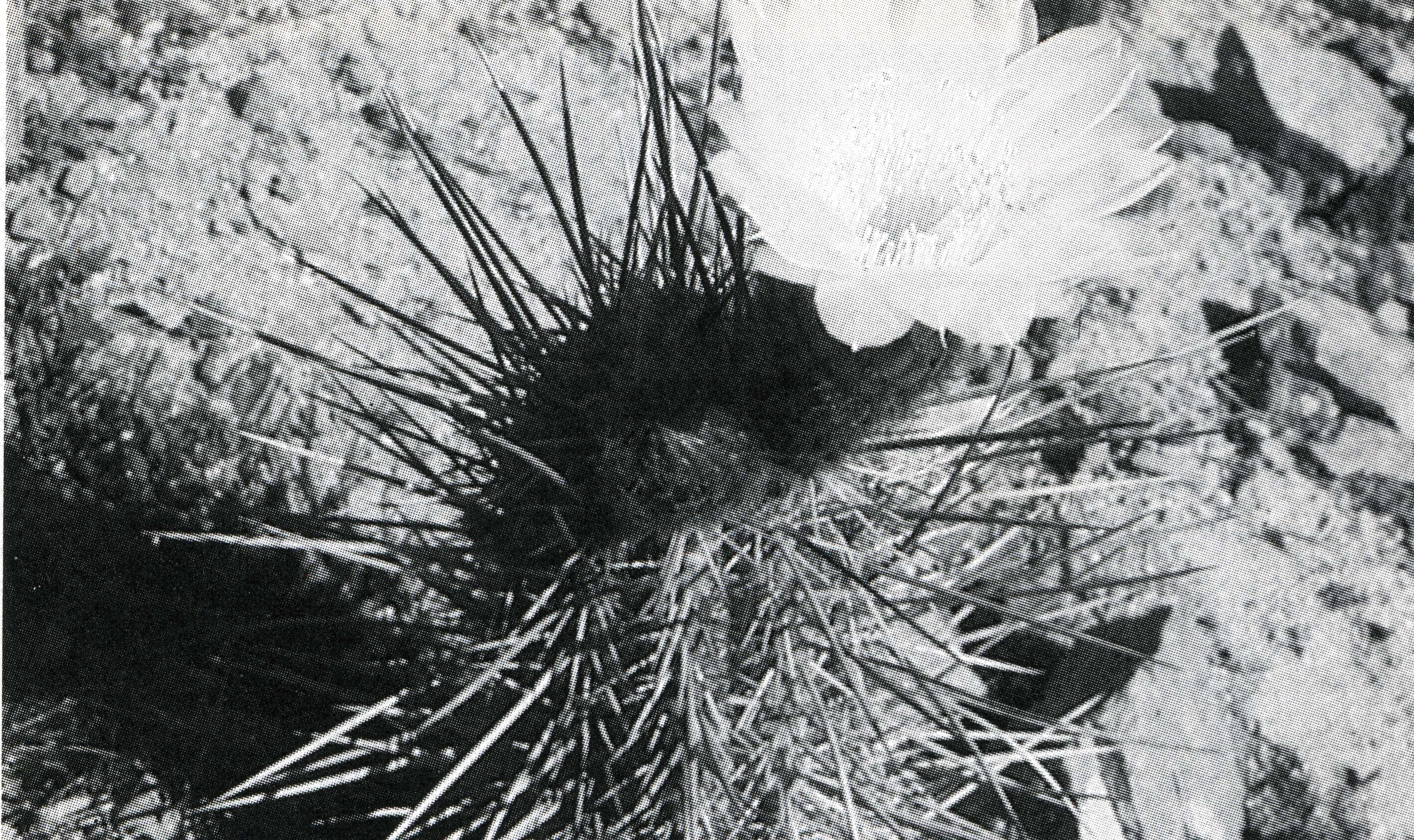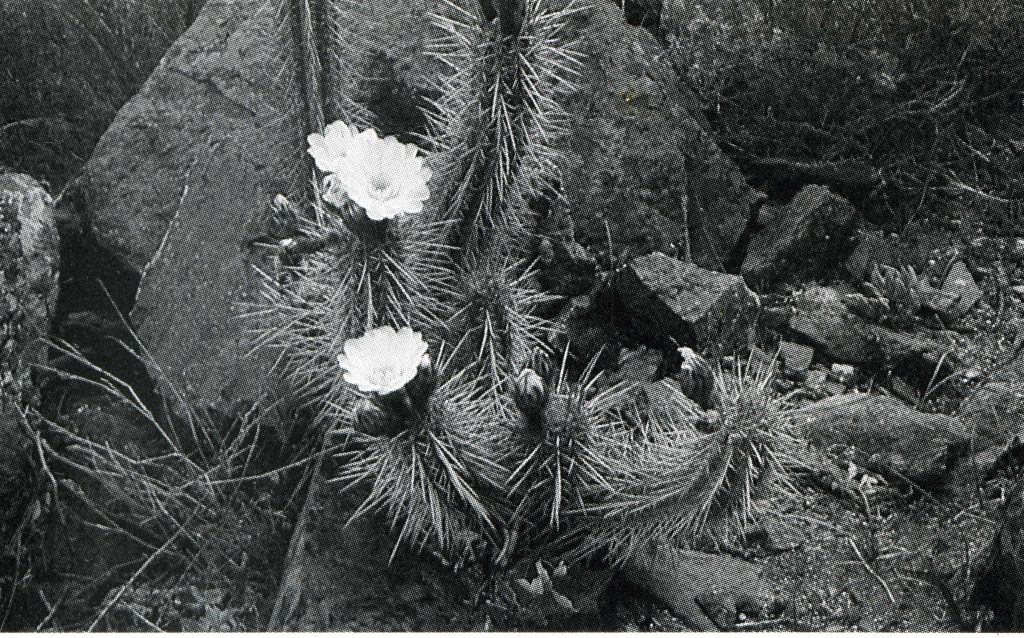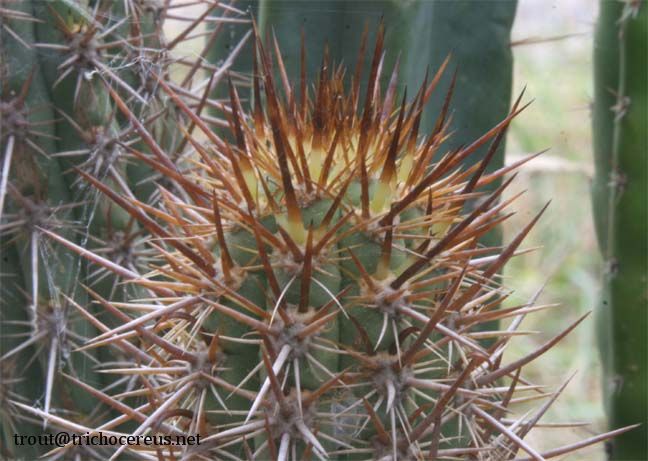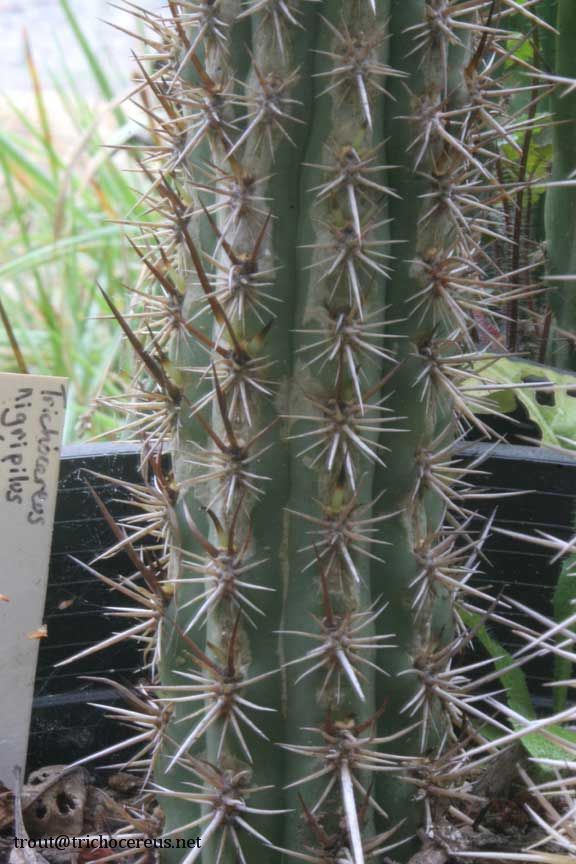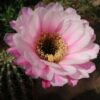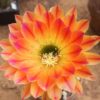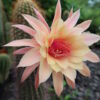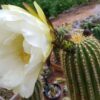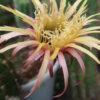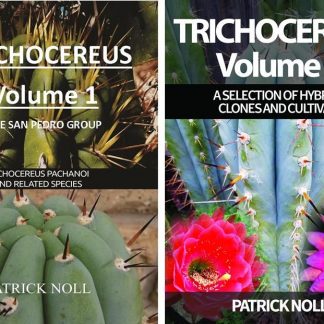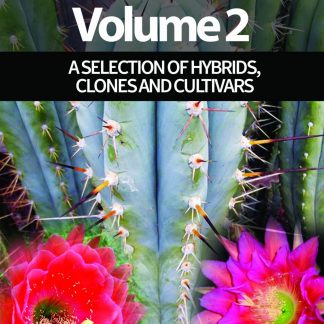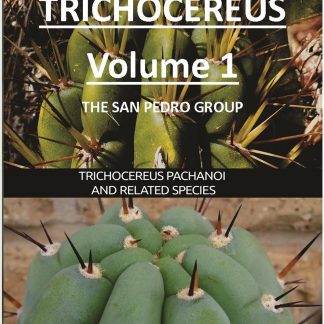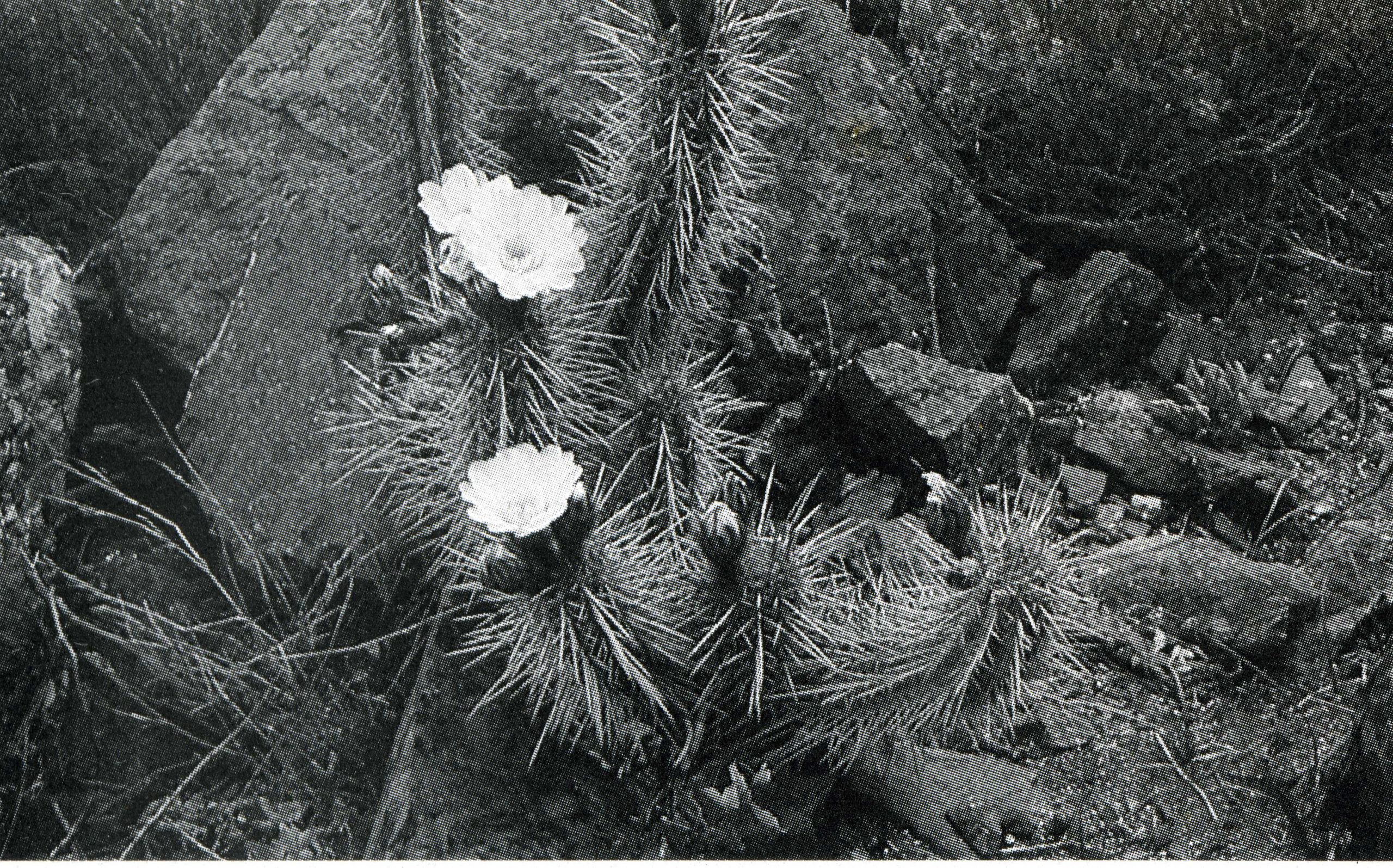
Trichocereus nigripilis / Trichocereus spinibarbis (Echinopsis)
Trichocereus nigripilis / Trichocereus spinibarbis is a Chilean Trichocereus species. There is a lot of confusion surrounding the name. According to Ritter, the plant was synonymous with a plant called Cereus spinibarbis Otto, which is why he described it as Trichocereus spinibarbis. These days, Trichocereus nigripilis is not an accepted name anymore and these plants are now understood to be part of the Trichocereus chiloensis complex. The name was re-classified as Echinopsis spinibarbis, but because of the chaotic situation surrounding the name, it would probably be best to lay it to rest.
In addition to the genetic proximity to Trichocereus chiloensis, these plants are very close to Trichocereus coquimbanus/Trichocereus fulvianus/Trichocereus deserticolus. In Coquimbo, there are a couple of intermediates and different forms growing together and this is one of them. But the whole description of the plant called Cereus spinibarbis Otto was already problematic to begin with because it lacked almost everything a reliable description should have. There neither were flowers nor fruits included in the description. The plants are very spiny and look like you´d expect a intermediate between Trichocereus coquimbanus and Trichocereus chilensis to look like. Trichocereus nigripilis (or Echinopsis spinibarbus) is similarly close to Trichocereus chiloensis, as Trichocereus litoralis. The latter is a subspecies/form of Trichocereus chiloensis.
The history of Trichocereus nigripilis is really long and you have to dig through all kinds of different descriptions. And I already mentioned why they are pretty flawed to begin with. The original description of Cereus Spinibarbis Otto came from Förster in 1846. This description was also reprinted in Labourets book in 1853.
Trichocereus Nigripilis has a grass green body and new shoots are approximately 4-5 centimeters thick. It has nine ribs and curved areoles with very distinct separating grooves. It has large, oval areoles that are white felted. The spines are yellow, straight, strong and have a black tip, what is responsible for the name “Nigripilis”. The areoles are 1-2 centimeters long and are only a couple mm apart of each other.
Trichocereus nigripilis has 8-10 radial spines and 2-4 middle spines, which are thick and up to 2,5 centimeters long.
Origin: Coquimbo. 30 Kilometers north of La Serena near the coast.
Salm-Dyck wrote about this plant, that the epidermis is dull and has a sandy/grainy texture. Unfortunately, I lack any plants to confirm this. If you grow one, please let me know because I am fairly interested in this plant and need better pics.
The plant that was described by Britton & Rose as Cereus spinibarbis was a different plant and does not belong here. They described a Eulychnia.
Trichocereus nigripilis forms large & multi-branched groups. New shoots emerge from the base and start growing upwards until later when they tend to bend over and growing almost creeping.
Ribs: 8-10. The plants growing in the northern areas around Huasco and Totoral tend to have more ribs than the ones in other areas. In these cases, the number is between 10-15 ribs. The plants in the original habitats usually have stronger spines and more ribs than the ones in collections.
Trichocereus nigripilis is VERY similar to Trichocereus coquimbanus. The differences in the flower are: The flower of Trichocereus nigripilis always emerges from the top part/apex, is 8-11 cm long and usually very wide open. The tube is 25-36 mm long, the top part 20-30mm wide and white on the inside. The stamens are white, 15-23 mm long. The stylus is whitish, 42-70 mm long.
Backeberg gave Quebrada Honda as Typus location (which is roughly 30 km north of La Serena). Friedrich Ritters Collection number was FR536.
Where to buy seeds or plants of Trichocereus nigripilis?: Well, this cactus is rare and will usually not come labeled as this. The Peruvian field botanist Karel Knize sold a large amount of them labeled as KK1425 Trichocereus nigripilus but I, unfortunately, lack any pics of the plant. Chances are that the color pics on this page show KK1425 but that´s just a guess. Apart from that, the plant is rare and will probably come labeled as Trichocereus chiloensis or Trichocereus coquimbanus. As you can see, the b/w pics show some extremely spiny plants while Knizes “presumed” KK1425 shows something that is more like a chiloensis. KK1425 was collected at Coquimbo, Chile at 1000 meters altitude.
Varieties: All I know is that there was/is a variety called Trichocereus nigripilis var. nigris. At the moment, I do not have any more info but I will add some later.
Trichocereus Nigripilis / Trichocereu Spinibarbis at the typus location.

